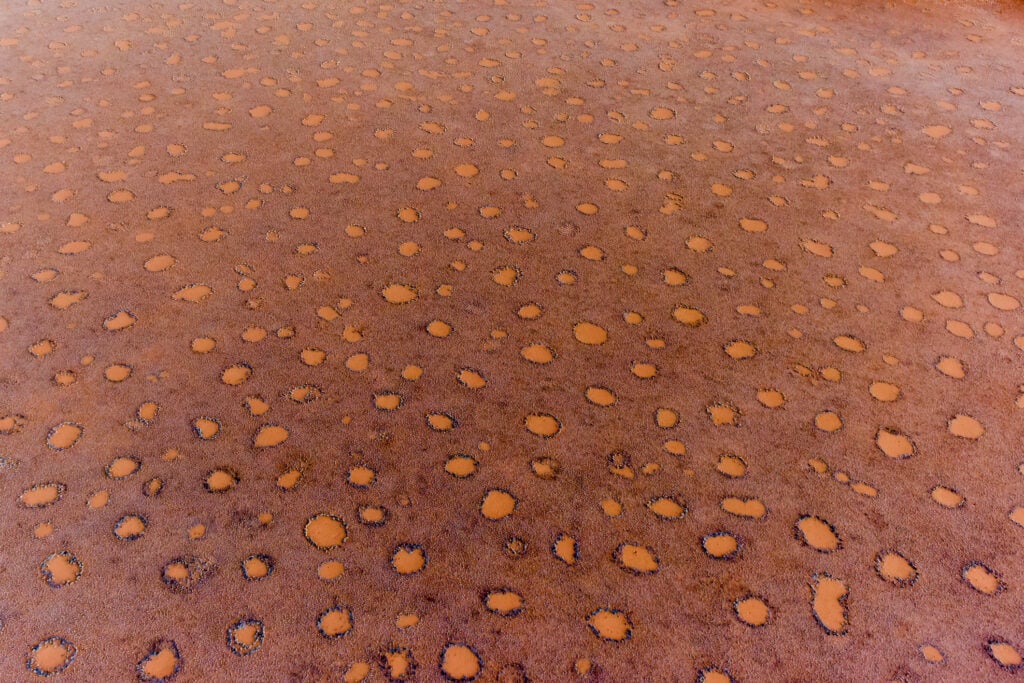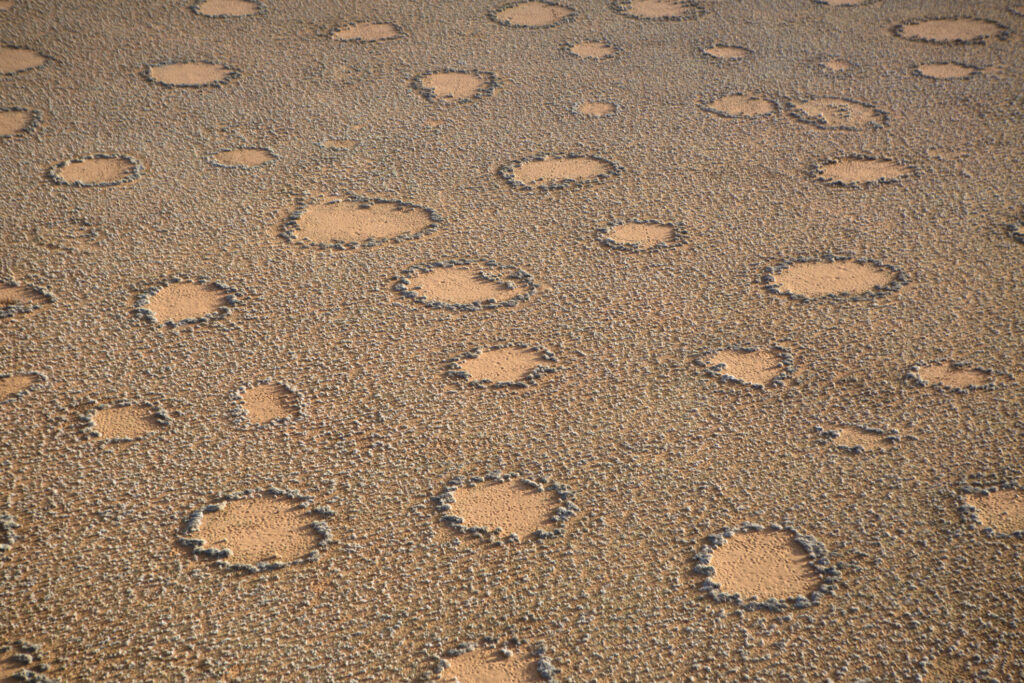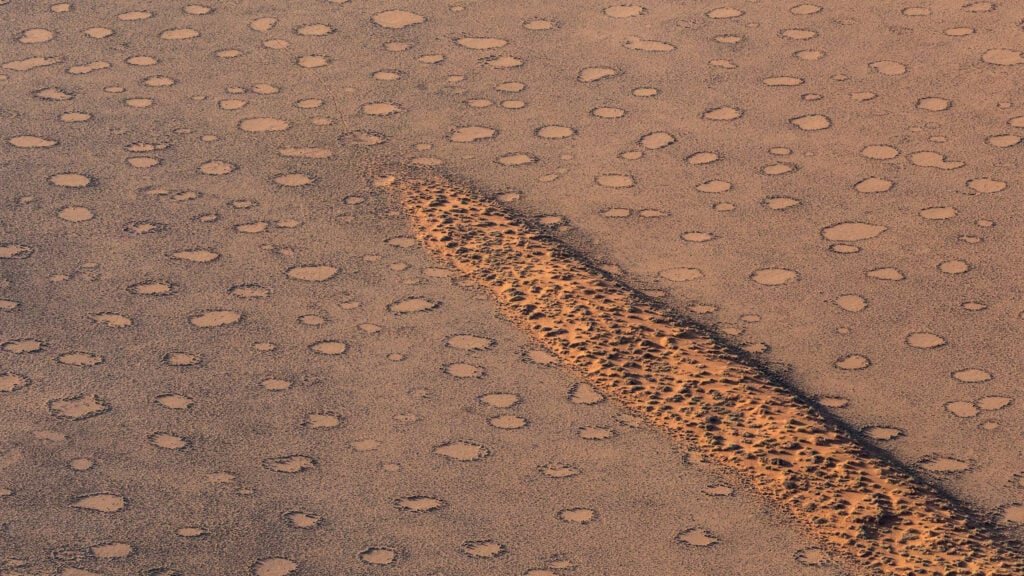Marks on the ground in the Namibian desert have long caused confusion. According to local myths, they are the “footprints of the gods”. The equally mysterious title of “Fairy Circles” is what they are commonly referred to.
Scientists still can’t say with absolute certainty what causes them, but we have a better idea than ever before about the natural phenomenon, partly down to similar Fairy Circles appearing in a different desert, on the other side of the world.

From deserts to grass planes, the patches of bare land appear across Namibia’s landscape and can grow over 80 feet wide. They come and go, some even move, patches varying in size but always appearing in circular shapes. What makes them more confusing still is the fact that they can pop up across the Namib desert, regardless of changes in temperature or climate.
In recent years, since the circles attracted widespread, global attention, theories behind them have included subterranean termites or competing breeds of grass. Now, with similar circles found in the Pilbara region of Western Australia, it turns out that both these schools of thought might be right.

Corina Tarnita led a team of researchers from Princeton University and explained: “The termites start with their own mound and go out and forage. If they find a smaller colony, they simply kill it and expand their own territory. But if they run into a colony that is about the same size, they cannot do that, and end up with a boundary where there’s permanent conflict, but not a full-blown war.
Read More: How mosquitoes are being used to fight dengue in Bali
Gladys Bidu, a First Nations elder of the Matru people in Western Australia, said the Fairy Circles were called Linyji and echoed the primary cause as termites. “I learned this from my old people and have seen it myself many times,” she said. “We gathered and ate the Warturnuma [flying termites] that flew from Linyji.”
The circles found in Australia are typically smaller and less frequent than in Namibia, always measuring less than 40 feet.

Earlier this year, ethnoecologist Fiona Walsh said: “Aboriginal people told us that these regular circular patterns of bare pavements are occupied by spinifex termites.
“We saw similarities between the patterns in Aboriginal art and aerial views of the pavements and found paintings that have deep and complex stories about the activities of termites and termite ancestors.
“After we dug and then dusted to clean the trenches, 100% of them had termite chambers seen horizontally and vertically in the matrix.”

The competition between desert greenery is not all that different, though the pattern is found “on a much smaller scale pattern driven by the plants self-organizing in response to water,” Tarnita explained.
“One of the most striking things about nature is that despite the complexity of all of its interactions and the many processes that act simultaneously, sometimes, and more often than we expected, you find these amazing regularities,” she added. “We wanted to know how can these messy things results in so much beauty and order on such enormous scales?”





